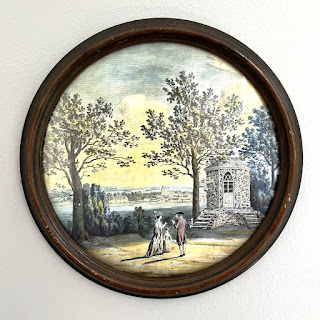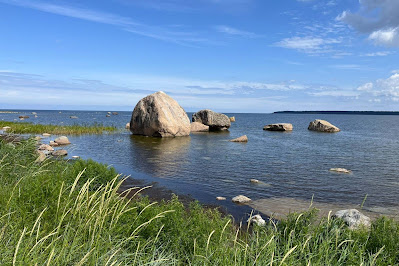It is possible that you are not a regular reader of Finnish gaming website Playlab! and so may have missed an article they ran by Sini Jaatinen on 'Lustfärd till Avasaka', the oldest Finnish board game. It is set out like Snakes and Ladders and players start with 25 marks each which they spend or augment on their journey - the first one back to Helsinki wins everything in the bank.
'The game is quite simple and not so exciting but the nostalgic elements make it interesting and you want to play it more than once. ... Each frame represents place in Finland in 1862, for example Tampere, Vyborg, Tornio and Oulu. There is some small information about the place and the actions that you should take in the rule book. ... Some of the facts that are given are now outdated, for example Tornio is not the most north city of Finland at the moment and Vyborg is not part of Finland. When playing with the children I feel that it is important that the adult sets the facts right. But the historical facts are still valid and you can also learn about the living in 1862.'
This article doesn't mention that the game was designed by Hilda Olson (1832-1916), an artist who features in the exhibition 'Crossing Borders: Travelling Women Artists in the 1800s', currently showing at Helsinki's Ateneum. The photo above is a page from the exhibition catalogue showing her board game and its fifty six landscapes. I couldn't see anything about her in this catalogue, which I flicked through while drinking tea in the museum cafe, but one of the wall texts next to an illustration of a spider had this to say.
'Hilda Olson was the first Finnish woman to work as a scientific illustrator. She took part in expeditions led by Professor of Zoology Alexander von Nordmann to Aland, to Crimea and other parts of present-day Ukraine and southern Russia. Olson translated short stories from English for newspapers while also designing lottery tickets and Finland's first board game, A Tour to Aavasaksa. After the deaths of von Nordmann and her mother, Olson moved to London and supported herself by drawing models for a wallpaper manufacturer. In her spare time, she travelled in England, Belgium, the Netherlands and France, and painted landscapes.'
I wondered where she lived in London and found online a short biography of her that says she died at 40 Whitehead's Grove in Chelsea. 'When she moved to England, she seems to have acclimatized herself to her new homeland quite quickly. In a letter, she says of the London air: "Fog and wet every day, but we are so used to those things and hardly notice the sky."' However, her work as a pattern-maker didn't leave much time to develop her painting. She may not have become a major artist but she is certainly an interesting figure, who left the small, insular town of Nykarleby to forge a new life in Helsinki and then travelled throughout Europe. Hilda Olson may be having a moment this year because there is also a small exhibition in Helsinki's Natural History Museum, 'Hilda's Spiders', featuring illustrations she did for von Nordmann in Russia.











